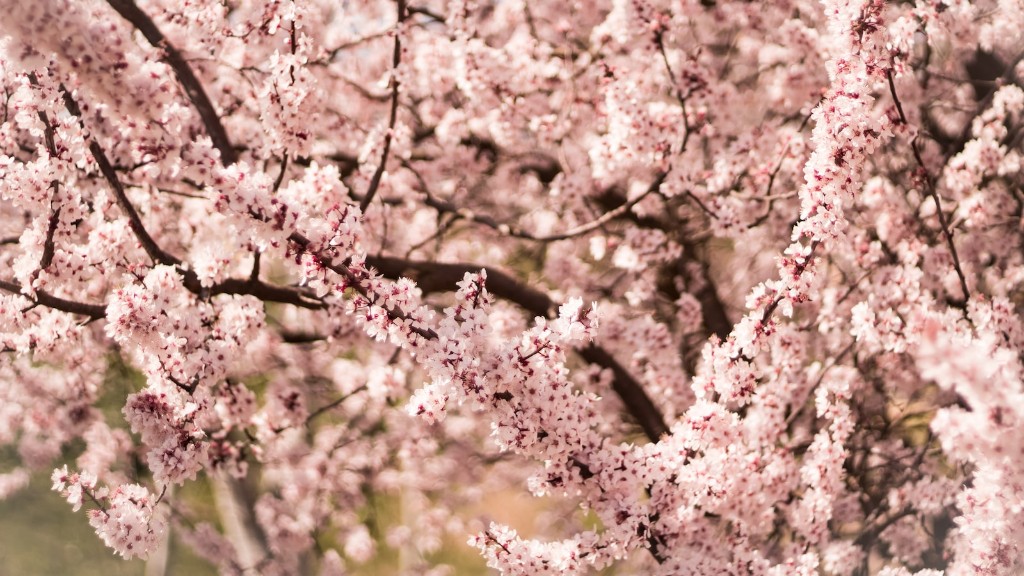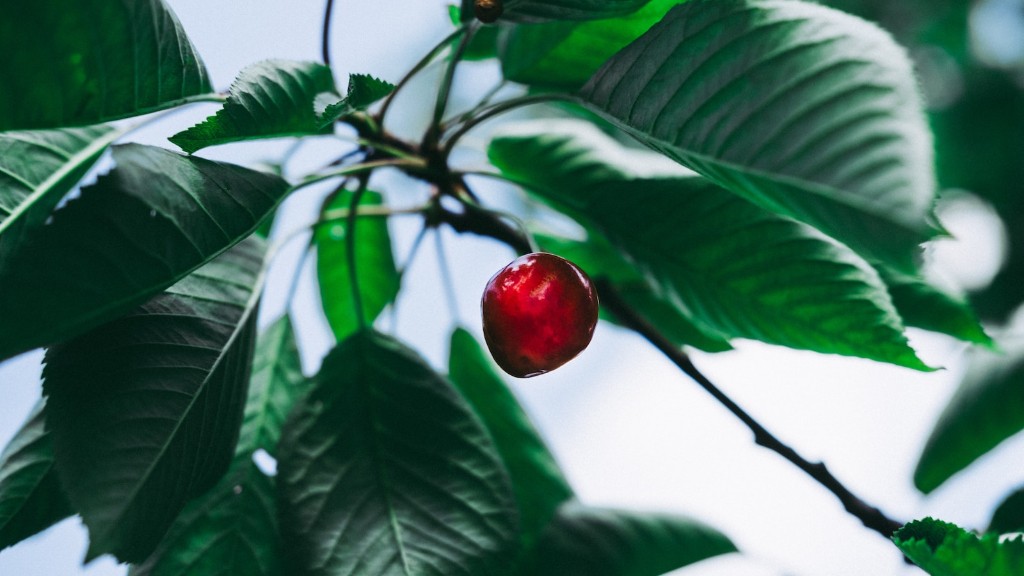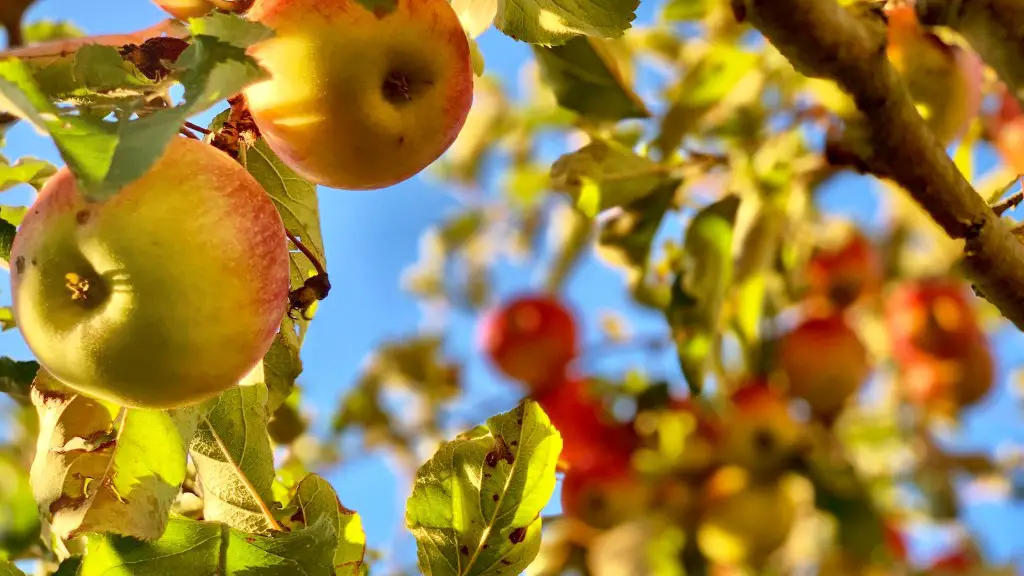Tools Required for Espalier
Making an espalier is an art that requires the gardener to have a few basic tools in its direction. The first essential tool is a spade or shovel, ideally with a curved blade. This will make it easier to dig the trenches to secure the main framework. A saw is also useful to trim the branches, while loppers will help to prune the tree and keep it in shape. Secateurs can also be useful to reach tight spaces in the main framework and to trim the finer branches. The gardener should also have a hammer or a mallet, brackets and twine.
Choosing the Right Species
When it comes to espaliering a cherry tree, it is important to make sure that the gardener chooses the right species. The best option to ensure that the tree will thrive are sweet cherries such as “Bing”, “Lambert” or “Rainier”. Sources of wild cherries, such as Prunus avium, can also be used for espalier, although not all of these cultivars are self-fruitful, so it is important to check the details before planting.
Making the Framework
Once the gardener has the cherry tree and the necessary tools, it is time to make the main framework. This is the most important part of espaliering and will determine the overall design and shape of the tree. The framework should be shaped like an inverted V, with three arms extending outwards. The gardener should then dig two trenches on both sides of the tree and secure the main branches with brackets and twine, making sure that they are firmly secured.
Shaping the Branches
Once the main framework has been secured, the next step is to shape the branches. The best way to do this is to use a combination of pruning and training. The gardener should first trim the branches back in order to create an even framework and then train them by tying them back in place, making sure that the branches are all at the same length. The gardener should use twine to tie the branches in place, making sure that they are tightly secured.
Fruiting and Harvesting the Cherries
Once the tree is shaped and the branches have been secured, the gardener should allow the tree to grow and fruit. Sweet cherries can take up to three years before they are ready to be harvested, so the gardener should be patient and allow the tree to grow and thrive. To ensure good yields, the gardener should keep the tree pruned and fertilized during the growing season.
Pruning the Tree
Pruning is an essential part of keeping the espalier cherries healthy, productive and attractive. Pruning should be carried out in late winter or early spring, when the tree is dormant. The main branches should be trimmed back, but the gardener should make sure not to remove too much at once, as this can shock the tree. When it comes to the side shoots, the gardener should make sure to prune them to promote new growth, and to provide the tree with an even framework.
Watering and Feeding the Tree
The cherry tree should be watered regularly, especially during the dry months, to keep the roots moist and ensure the health of the tree. A slow-release fertilizer should also be used, and the gardener should take into account the age and size of the tree when calculating how much fertilizer to apply.
Protecting Against Pests and Diseases
Cherry trees are an attractive target to many pests, such as aphids, mites, borers and caterpillars, as well as to diseases, such as blight and canker. The gardener should take measures to protect the tree against these pests and diseases, such as properly pruning and disposing of infected branches, and using natural predators to control infestations.
Preparing for Winter’s Bite
When winter sets in, it is important to make sure that the tree is ready and prepared for the cold. In order to do this, the gardener should wrap the tree in burlap or plastic sheeting, and cover the soil with a thick layer of mulch. This will help to keep the temperatures from dropping too low and will provide the tree with extra insulation against the cold.
Rigorous Maintenance and Monitoring
Espaliering a cherry tree requires not only the right tools and techniques, but also rigorous maintenance and monitoring. The gardener should keep an eye on the tree to make sure that it is healthy, productive and attractive. This can involve regular pruning and training, as well as monitoring the health of the tree and taking measures as needed to protect it from pests and diseases.
Propagating and Growing from Cuttings
In addition to espaliering the cherry tree, the gardener can also propagate and grow it from cuttings. This involves taking a cutting from a mature cherry tree, which should be between 6 to 12 inches long, and planting it in a pot filled with soil. The gardener should make sure to keep the pot in a warm and sunny place, as this will ensure that the cutting takes root.
Cross Pollination and Grafting
For the cherry tree to produce good yields, it is important to ensure that it is cross pollinated by other compatible varieties. For example, the “Bing” sweet cherry requires the “Van” variety for pollination. Grafting is another option, although it is more complex and requires more skill, as it involves attaching a branch or twig from another compatible variety to the main stem.
Benefits of Espaliering Cherry Trees
Espaliering cherry trees provides a number of benefits, both aesthetic and practical. Not only does it add a beautiful feature to any garden, but it also increases yields, as more branches are able to be trained and fruit production is boosted. In addition, the monitoring, pruning and training needed to maintain the shape encourages strong root growth, which in turn increases the chances of the tree surviving during adverse weather conditions.



